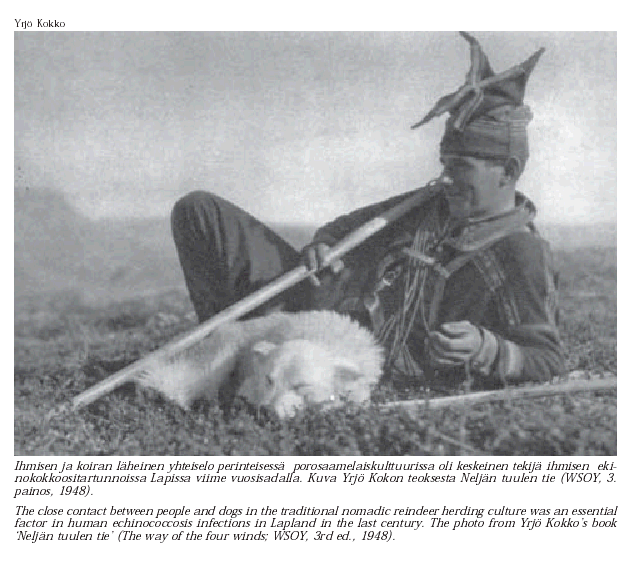
In Echinococcus granulosus, considerable intraspecifi c morphological, biochemical, physiological and genetic variation has been demonstrated. Currently, E. granulosus is divided into several strains, but some of these strains will probably be classifi ed as distinct species. The E. granulosus strains differ also in host specifi city and infectivity to humans. The so-called sheep strain is regarded as the most pathogenic strain to humans. A more benign form of echinococcosis occurring in North America is caused probably by the cervid strain. The E. granulosus strain occurring in Finland was earlier believed to represent this North-American cervid strain because of similarities in the life cycle between cervids and wolves. However, in a recently published genetic study, the Finnish Echinococcus was found to be a distinct Fennoscandian cervid strain. In the middle of the last century, human echinococcosis was found in the reindeer husbandry area, but for decades no endemic cases of human echinococcosis have been encountered in the Nordic countries. In this review, the pathogenicity of the Echinococcus strain that occurred in the Nordic reindeer husbandry area is evaluated on the basis of historical case reports.
